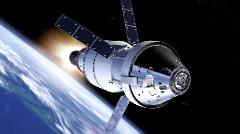Designing Space Missions

Designing Space Missions and Systems examines the real-world application of the entire space systems engineering discipline. Using a process-oriented approach, the course starts with basic mission objectives and examines the principles and practical methods for mission design and operations in depth. Interactive discussions focus on initial requirements definition, operations concept development, architecture trade-offs, payload design, bus sizing, subsystem definition, system manufacturing, verification, and operations. This is a hands-on course with a focus on applications. Design exercises are conducted to give first-hand experience with the techniques presented and gain experience with mission design trade-offs.
Learning Objectives
At the end of this course you will have the knowledge, tools, and experience to start with a blank sheet of paper and design an effective space mission to meet a broad set of objectives, or critically analyze proposed mission designs with insight into the critical trade-offs between cost, schedule, performance, and risk. By the end of this course participants will walk away with:
- An enhanced understanding of the big picture of space missions and systems
- A detailed working knowledge of how all the elements of a space mission work and the key trades that lead to a successful mission
- Practical experience with applying systems engineering processes to develop conceptual designs for space missions and systems
- An organized framework for future space learning — on your own, in academic courses, or other short courses
Who Should Attend
Systems engineers, payload principle investigators, subsystem engineers, or project managers who are responsible for the detailed design and operation of space systems.
Testimonials
“This class was beneficial for all areas of design. All Systems Engineers should take this.” –Boeing Engineer
"The course exceeded my expectations. I did not think that the course could cover so many fundamentals of space missions!" – ESA Engineer
" Theory tied to practical applications well. Great presenters with thorough knowledge of the material." - NASA Engineer
Classroom Hours: 24 classroom hours / 2.4 CEU/PDH
- Module 1: Conceptual Mission Design
- Applied Space Systems Engineering
- The Space Environment
- Designing Space Missions
- Module 2: Orbit Design
- Understanding Orbits
- Describing and Using Orbits
- Maneuvering in Space
- Orbit Design and Selection
- Module 3: Spacecraft Design
- Launch System Services
- Ascent & Reentry
- Payload Design
- Spacecraft Architecture Development
- Module 4: Subsystem Design
- For Each Subsystem Review
- Scope, Driving Requirements
- Functional Architecture
- Physical Architecture Options & Key Principles
- Subsystems
- Electrical Power Subsystem
- Attitude Determination & Control/Guidance Navigation & Control
- Rocket Propulsion, Communications,
- Data Handling, Thermal Control
- Structures and Configuration
- For Each Subsystem Review
- Module 5: System Implementation, Operations & Evaluation
- Implementation
- Mission Operations
- Evaluating Mission Cost and Risk
- Threaded Case Study and Hands-on Exercises
Each registrant will receive:
- Space Mission Analysis & Design-CORE
- Course Notes: A complete set of course notes with copies of all slides used in the presentations
- TSTI Alumni status allowing online access to course materials, including tools and videos through the Alumni Lounge
AIAA Training Links
For information, group discounts,
and private course pricing, contact:
Lisa Le, Education Specialist (lisal@aiaa.org)
